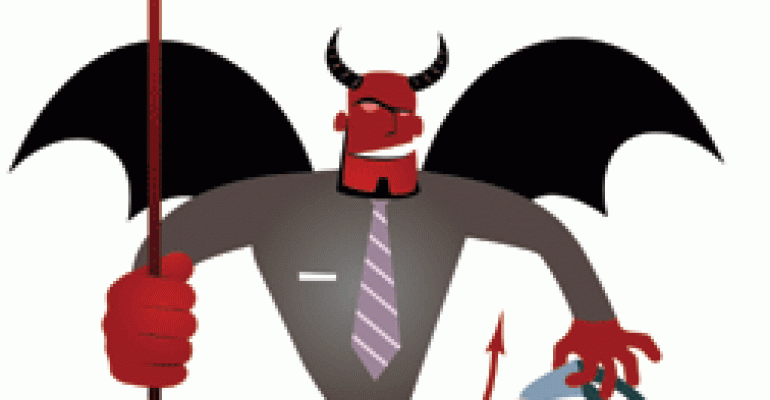
When it comes to assessing risk in one's investment portfolio, most people tend to think in only one dimension. Ask them what risk concerns them most, and the answer is likely to be: losing money in the stock market. Far fewer would answer: outliving my retirement savings.
While portfolio reallocations may help to assuage investor concerns over the risk weighing most heavily on their minds — that of losing money in a stock selloff — these moves tend to ignore other risks — throwing your asset allocation out of whack, underfunding your retirement, or losing principal on bond fund investments when interest rates rise.
Consider the fact that investor appetite for Treasury bonds, considered to be a safe asset class because they have no credit risk, has been so strong as to bid their price up (and hence their yields down) to levels not seen in the past 40 years.
Of course, bonds are not without risk. In the case of a fund that invests in Treasuries, the worry is that interest rates will rise in the future, causing the fund to mark down the prices of the bonds in the portfolio by an amount that offsets a year or more of their interest payments.
But even leaving aside the whole question of interest rate risk, consider again another risk investors need to consider: outliving their retirement savings. With life expectancies reaching the point where investors need to plan for living 20 to 30 years in retirement, such long term liabilities may not be met with assets that today yield well under 4 percent for 30 years.
Investors may have fled from one form of risk only to run headlong into another.
Behavioral studies show that our regret over losing money in a market decline is roughly twice as great as our euphoria over gains when the markets rise. Major declines tend to send us scurrying for the exits, abandoning asset classes as they become cheaper and offer better value.
Investors who have an asset allocation plan that is appropriate for their risk tolerance and who stick to it through market gyrations are likely to be far better off. For starters, the diversification of assets in the plan should mean they don't feel the full brunt of an equity market decline. Then, by sticking to the plan's targeted allocation for different asset classes, investors who can continue to acquire equities do so at cheaper valuations in a market decline, and therefore may be positioned for an eventual rebound. Sticking to the plan also means lightening up on equity exposure when valuations become stretched, as they were in 1999.
The key to this discipline is periodic rebalancing to bring the portfolio's asset allocation back to its original targets. Say an investor's risk tolerance calls for a portfolio of half stocks and half bonds. A portfolio at those levels on Jan. 1, 2003, without rebalancing, would have become skewed to 62 percent stocks and 38 percent bonds by the stock market high on Oct. 9, 2007, leaving the investor over-exposed to equities as the stock market began its precipitous decline in the crisis.
Even more pronounced was the ensuing skew to fixed income following the equity market collapse; a 50/50 portfolio of stocks and bonds on Oct. 10, 2007, without rebalancing, would have shifted to 29/71 stocks to bonds by the market low of March 9, 2009, setting up the investor to miss out on much of the market rally that began at that point.
Strong equity markets prior to 2000 no doubt bred a level of complacency that may have led many individual investors to allocate more to equities than their risk tolerance may have warranted. In such cases a lowering of the equity allocation makes sense. But given the heavy skew of fund flows to bonds since the financial crisis, as reflected in Investment Company Institute fund flow data, it appears that many investors have reacted by shifting from their target to favoring what they perceive as the “safe” asset class.
But shedding one form of risk doesn't mean you aren't adding another. There's no such thing as a risk-free lunch.
James Jessee is president of MFS Fund Distributors






